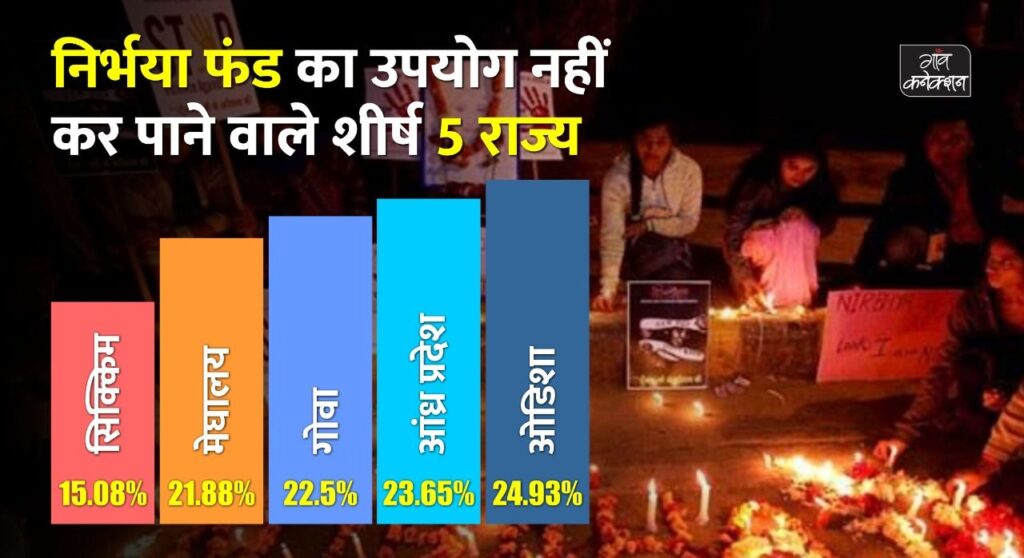Twenty-year-old Nikita (name changed) of Sitapur district in Uttar Pradesh, which is in the news for the brutal Hathras and Balrampur incidents, stares at an uncertain future. She is speech and hearing impaired, and is mother to a two-year-old child, born of rape.
A relative raped her three years ago and she could not scream for help or narrate what happened. The assault came to light when she was found to be five months pregnant. After great struggle, an FIR was filed against the accused. She is yet to get justice or any kind of financial assistance.
There are numerous schemes, including the Nirbhaya Fund, provided by the central and state governments towards the rehabilitation and subsistence of a survivor or victim of sexual assault, and this has to be disbursed within three to six months.
On the one hand, survivors of rape struggle to lead a life. On the other, crores of funds remain unused under a scheme meant to help girls and women who have suffered sexual assault and named after a young woman in Delhi who roused the nation’s collective consciousness in 2012.
The ‘Nirbhaya Fund’, set up by the central government in 2013, was meant to facilitate a number of schemes relating to women empowerment and women safety, including emergency phone helpline assistance, compensation to victims and survivors, prevention of crime against women and women police volunteers. However, as per the centre’s own admission, this vital scheme is in jeopardy.

Replying to a question by Congress MP Adur Prakash from Attingal in Kerala in the last monsoon session of Parliament, women and child development minister Smriti Irani stated that Rs 3,024.46 crore had been released under the Nirbhaya Fund since 2013, out of which only Rs 1919.11 crore (63.45 per cent), had been utilised. Neither the centre nor state governments have an answer as to why the remaining Rs 1,105.35 crore could not be spent.
Among the 10 lowest-spending states were Sikkim (15.08 per cent), Meghalaya (21.88 per cent), Goa (22.5 per cent), Andhra Pradesh (23.65 per cent), Odisha (24.93 per cent), Jharkhand (25.94 per cent), Haryana (26.93 per cent), Assam (32.06 per cent), Madhya Pradesh (34.63 per cent) and Kerala (37.14 per cent
The top utilisers are Tamil Nadu (87.62 per cent), Delhi (86.2 per cent), West Bengal (81.7 per cent), Gujarat (78.31 per cent), Karnataka (76.44 per cent), Nagaland (68.81 per cent), Uttar Pradesh (66.67 per cent), Uttarakhand (65.58 per cent), Maharashtra (60.61 per cent) and Mizoram (59.46 per cent).

Following the brutal gang rape and death of a young woman in Delhi in 2012, the then central government set in motion some major reforms keeping in view the safety of women; the Nirbhaya Fund was one of them. Since women’s safety is a matter of law and order, which, in turn, is the responsibility of state governments, the release of money under this was announced to the state governments by the Ministry of Finance.
In the first year, Rs 1,000 crore was allocated to the Fund, with the provision that this would be distributed annually among various states, depending on population, area and level of crime against women. But the amount under the fund has been declining year after year, and the central government has been able to release only Rs 3,024.46 crore over a period of seven years.
Why has the budget and utilisation of the Nirbhaya Fund continued to decline despite the perpetual rise in crime against women?
Uttar Pradesh has so far received Rs 324.88 crore under Nirbhaya Fund but utilised only 66.72 per cent, Rs 216.75 crore. However, Uttar Pradesh’s spending average (66.72 per cent) is slightly above the government average (63.45 per cent). Although Uttar Pradesh is included among the top 10 states under the Nirbhaya Fund, the unutilised 33.28 per cent is problematic. Especially, when cases of violence against women in the state have been steadily increasing, as observed by the NCRB report.
Renu Mishra, an advocate from the Association for Advocacy and Legal Initiatives-AALI, a legal body working for women’s rights, stated that these figures reveal how serious governments are when it comes to support and rehabilitation of rape survivors and victims.
Speaking at Gaon Connection’s show Gaon Café, Mishra said, “Whenever an incident of rape incident makes it to the national headlines, people start talking about the need for more stringent laws. But, there already exists a stringent law in the country against rape and violence against women.” This has evolved further after the Nirbhaya case, she added.
Similarly, numerous commendable provisions and regulations have been put in place for the rehabilitation of survivors. “What is needed is for the government and the local district administration to implement them properly, steering clear of the red tape,” she said.
The Nirbhaya Fund was used to set up the Rani Lakshmibai Mahila Samman Kosh for women affected by violence in Uttar Pradesh. Under this, a woman victimised by any kind of violence was to be given between Rs 3 lakh and Rs 5 lakh within three months for livelihood and rehabilitation.
However, Archana Singh, in-charge of the women helpline One Stop Centre 181, said that “currently, the situation is so bad that it takes as long as two to three years for aggrieved women to receive the amount”. She attributed the delay and dysfunction more to the administrative negligence of local officials at the district level than the governments.
Speaking to Gaon Connection, Singh admitted that for the last year, the functioning of 181 had been badly hit due to lack of funds. However in July this year, the government promised to pay pending salaries and also said it would merge the 181 helpline with the 112 police helpline. Calls to 181 will automatically be redirected to 112.
The promise of salaries provided succour to the hundreds of 181 helpline employees who were subjected to mental anguish and financial hardships in the past year. One of them even ended her life due to economic hardship.


















